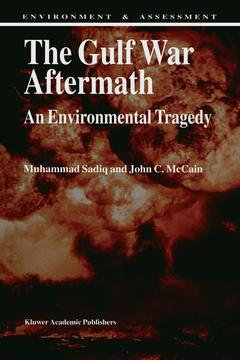Description
The Gulf War Aftermath, Softcover reprint of the original 1st ed. 1993
An Environmental Tragedy
Environment & Assessment Series, Vol. 4
Authors: Sadiq M., McCain J.C.
Language: English
Subject for The Gulf War Aftermath:
Approximative price 52.74 €
In Print (Delivery period: 15 days).
Add to cart
Publication date: 10-2012
299 p. · 16x24 cm · Paperback
299 p. · 16x24 cm · Paperback
Description
/li>Contents
/li>
In 1962 Rachel Carson warned of the consequences of man's pollution in her book Silent Spring, a book that some feel marks the real beginning of our environmental awareness. Silent Spring told of the consequences of our increasing pesticide use to birds. Almost 30 years after her warning, the western Arabian Gulf experienced its "silent spring" when approximately 100,000 to 250,000 waterbirds died, along with millions of other organisms, due to the massive oil spill that resulted due to Gulf war. The magnitude of our environmental problems has continued to grow during the last thirty years to a point where even the "doomsday" environmentalists could hardly have envisioned back in 1962. It seems the death of yet uncounted thousands of humans was not sufficient for Saddam Husain. His desire for power and infamy led him to unleash environmental war on mankind. At the end of the Gulf war he set ablaze the oil fields of Kuwait and released more oil into the sea than had been spilled at any time throughout history. These actions were despicable and an affront to civilized man. A quality environment should be a right of all mankind, and to wage war by deliberately polluting the earth cannot be tolerated.
Preface. 1. Introduction. 2. Impact of the War on the Marine Environment. 3. Environmental Impact of Kuwait Oil Fires. 4. Air Pollution from the Kuwait Oil Fires. 5. Air Pollution from Military Operations. 6. Gulf War Impact on Land Resources. 7. Human Health and the Gulf Crisis. Index.
© 2024 LAVOISIER S.A.S.




